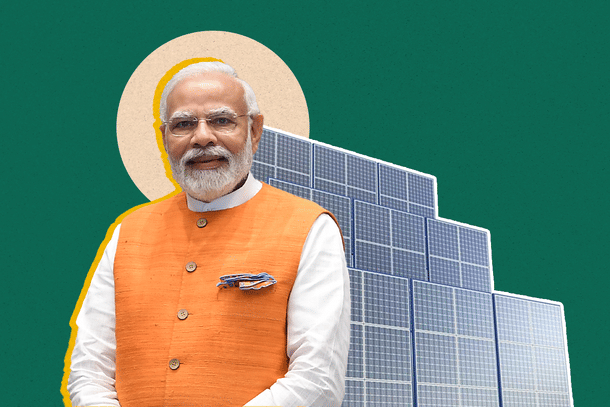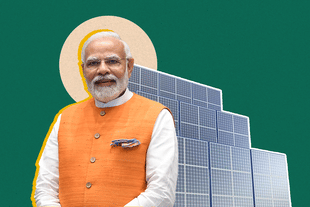Infrastructure
PM Modi's Big Solar Scheme Must Battle Free Electricity Subsidies
Sharan Setty
Mar 02, 2024, 12:40 PM | Updated 12:40 PM IST
Save & read from anywhere!
Bookmark stories for easy access on any device or the Swarajya app.


Union Minister Anurag Thakur on 29 February announced the approval of PM Surya Ghar Muft Bijli Yojana.
This scheme was announced by Finance Minister Nirmala Sitharaman in her budget speech. It was subsequently launched by Prime Minister Narendra Modi on 13 February.
As part of this scheme of the Ministry of New and Renewable Energy, 45 GW of renewable energy will be produced. One crore households could avail of 300 units of free electricity and an annual income of Rs 15,000.
This wouldn't have been a difficult choice for the government, considering the Prime Minister's aversion to freebies, or 'revdis' as he calls them, being doled out by many states.
Given the abundance of sunlight in India, the government is better off providing poor households with solar panels instead of the free electricity that many opposition-led states have been offering. This may be the logic behind the PM Surya Ghar scheme.
The Centre wants to spend Rs 75,000 as 'central financial assistance' to help poor households acquire solar panels. The plan is to subsidise household rooftop solar panel setups for up to 2-3 kw capacity. This should allow for 200-300 kWh (or 'units') power to be generated every month.
The figure of 200-300 kWh of monthly power is significant because it is the amount of power that various state governments are currently fully subsidising — giving it away for free.
A solar rooftop installation of 2 kWh won't come cheap, though. The government estimates that such a unit would cost Rs 1 lakh and will provide a 60 per cent direct subsidy. The remaining 40 per cent — or about Rs 40,000 — will have to be coughed up by the consumer.
The government will also offer loans with interest rates pegged at a relatively cheap 7 per cent (at present rates) per annum to bridge the gap for consumers. Moreover, beneficiaries can sell the surplus electricity via net metering, which will be installed by the distribution companies (DISCOMs) that manage the grids.
The idea is to make the scheme appealing. But whether it's appealing enough for people to not be swayed by the free electricity giveaway is still uncertain.
Battling free handouts isn't easy after all; once given, it's nearly impossible, and politically suicidal, to undo them. That's another reason why the Centre has chosen this scheme instead of just fighting the revdi culture through narrative alone.
The solar scheme also offers states which have already given free electricity handouts a way out of it.
For instance, the Congress-led Karnataka government today provides free power of up to 200 units to nearly 1 crore households. Even if 10-20 per cent of these homes were to move to the Surya Ghar setups, it would reduce the loads on the grid as well as the state exchequer.
If the financing part of the scheme works well and a large number of households put up enough capacity to pay off their loans with the excess power they generate — PM Surya Ghar may, in the coming years, defeat one of the most ruinous freebies being doled out by state governments — free electricity.
Sharan Setty (Sharan K A) is an Associate Editor at Swarajya. He tweets at @sharansetty2.





